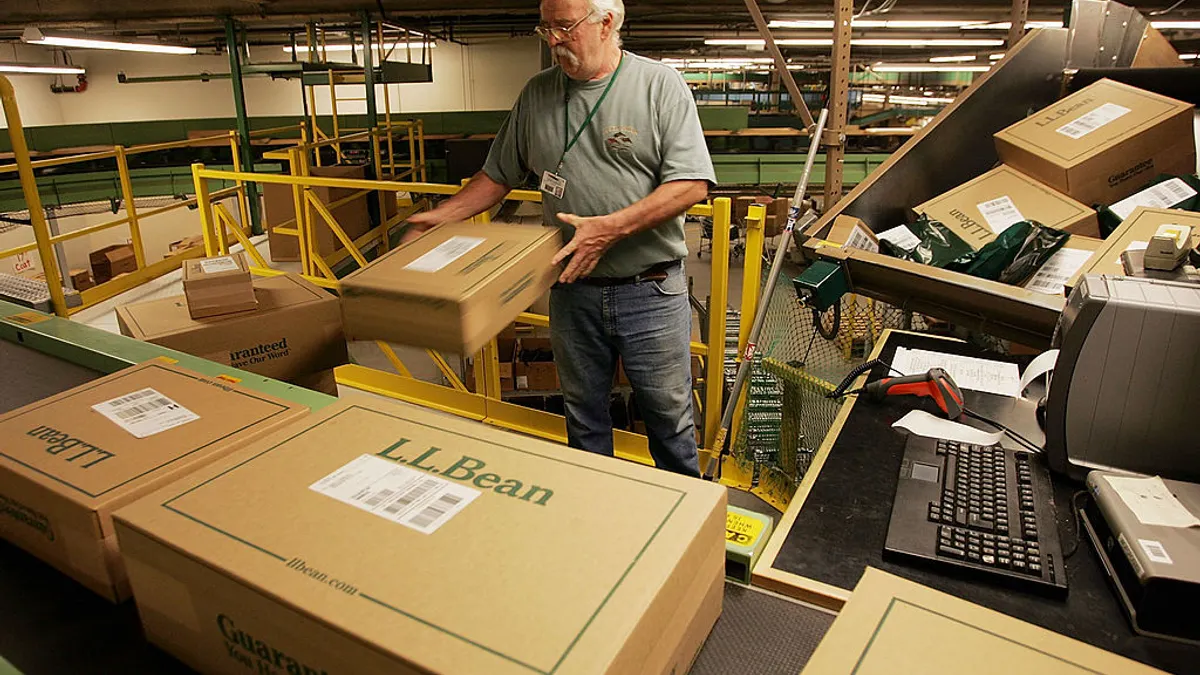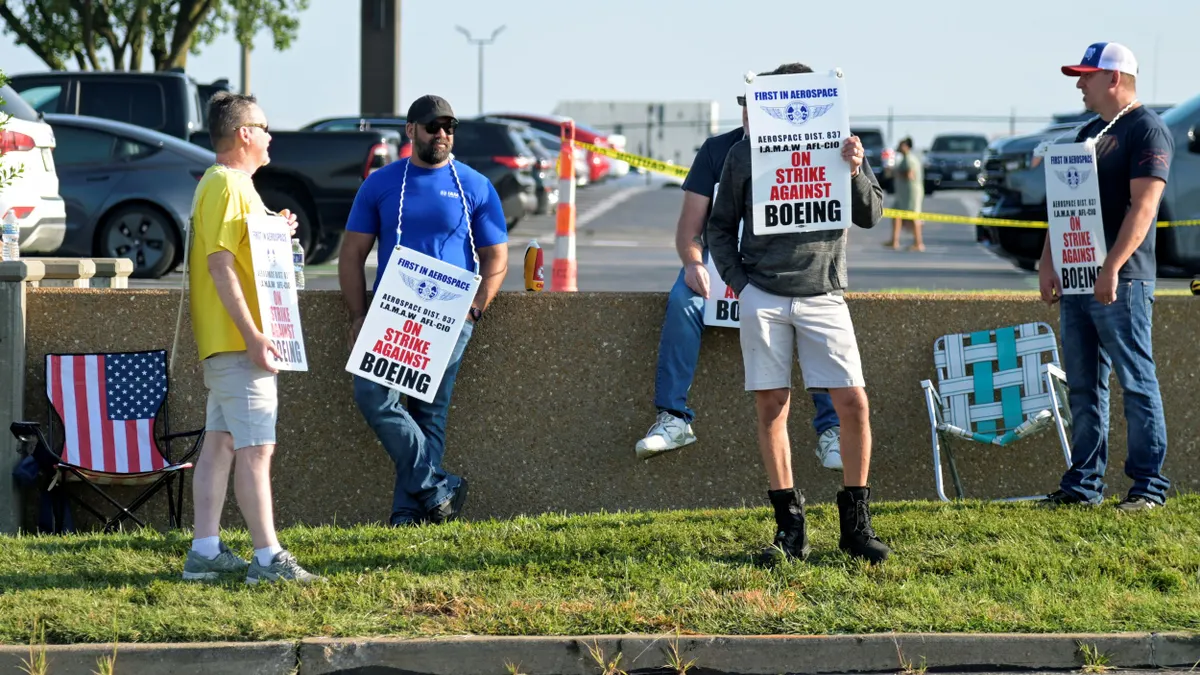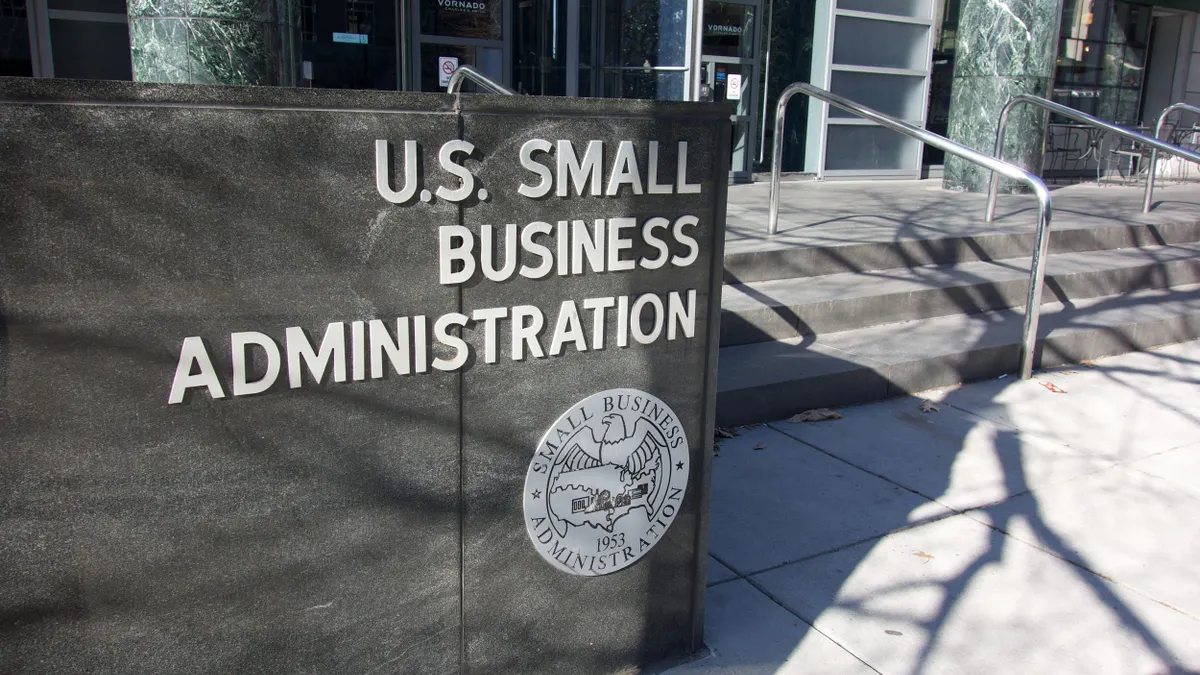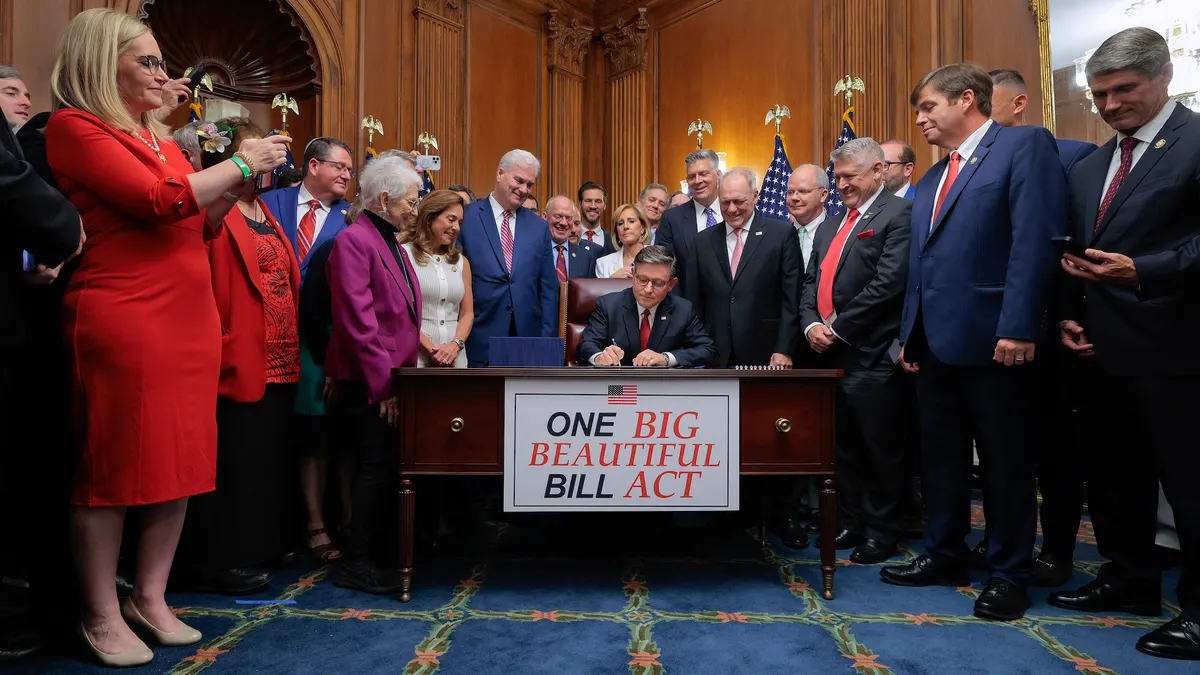Maine is known for its blueberries, lobsters, lighthouses and sweeping forests.
Now, the Pine Tree State is gaining attention for something else: having some of the country’s strictest PFAS regulations.
In 2016, state officials began investigating PFAS contamination on farms fertilized with wastewater sludge; the compounds have now been discovered on more than 100 farms in the state. The discovery of widespread contamination led to Maine lawmakers passing a groundbreaking bill in 2021 to ban the compounds from most products sold in the state.
“At the end of the day, the only way we can prevent further PFAS contamination is to stop it from coming into the state,” said Sarah Woodbury, VP of policy and advocacy at Defend Our Health, a Maine nonprofit that pushed for the legislation.
While a modified version of the law now exempts some product categories, such as certain medical devices, semiconductors and their components and motor vehicles, Maine’s ban remains among the strictest in the nation. With a ban on PFAS in many types of consumer products going into effect next year, manufacturers and environmental advocates alike see Maine as a testing ground for how PFAS regulation could play out in other states.
“Everyone is kind of looking at Maine to see how this progresses,” said Joseph Green, a partner with Kelley Drye & Warren LLP who advises companies on environmental compliance.
States lead the charge on regulating PFAS in products
With limited federal oversight of PFAS in products, states like Maine have stepped up with their own bans.
Fifteen states have banned the use of PFAS in firefighting foam, one of the most pervasive uses of forever chemicals in the U.S., while Maine, Minnesota and Washington have banned PFAS from use in all products, according to the nonprofit Safer Streets.
20 states have adopted PFAS legislation, another 16 introduced bills
Maine was the first state in the country to ban PFAS from all products, unless the use of the compounds is “currently unavoidable”— meaning the product is essential for health and safety, and no reasonable alternative exists. While the full ban was originally set to go into effect in 2030, lawmakers overhauled the law last year due to manufacturer concerns and a lack of capacity in the state’s two-person chemical regulation department.
A particularly contentious piece of the initial legislation was the requirement that manufacturers file reports on any product containing PFAS by 2023. Mike Roughton, executive director of the Manufacturers Association of Maine, said that the association, among other lobbying groups, pushed for a delay to the reporting requirement coupled with exemptions for certain industries.
Most of Maine’s manufacturers have fewer than 20 employees and do not have a lot of expertise in navigating supply chain disclosures, Roughton added. “The big challenge for everybody was … all of a sudden this legislation drops, and then at the 11th hour, everybody's required to report or they're going to be fined.”
The updated law now phases in the bans, with prohibitions on PFAS in cleaning products, cookware, cosmetics and some personal care products, ski wax and upholstered furniture starting next year. The law also now exempts a number of product categories including firefighting foam, medical devices and marine equipment, and requires product reports only for items that receive a currently unavoidable use determination.
Maine is not the only state taking a broad approach to regulating PFAS — policy experts point to Minnesota, Washington and California as other states with far-ranging product bans. New Mexico, on the other hand, recently passed a PFAS ban that excludes certain products made with fluoropolymers, a common type of PFAS used in nonstick cookware and industrial applications.
It remains to be seen whether states will follow Maine’s broad approach to regulating the compounds, or the narrower option taken by New Mexico, according to Green.
While industry has tended to favor the latter, environmental scientists have argued that it makes more sense to regulate the compounds as a class due to the number of PFAS chemicals and concerns about their potential health impacts.
“Given the overwhelming amount of information about the toxicity and exposure concerns with the entire class of PFAS chemicals, it's reasonable to require this level of demonstration that the use really is needed and there's not an alternative that's already available,” said Alissa Cordner, co-director of the PFAS Project Lab at Northeastern University and an Associate Professor of Sociology at Whitman College.
How manufacturers are responding to Maine’s law
The passage of Maine’s law in 2021 “sparked a massive communication stream up and down the supply chain,” said Green.
When talking to suppliers about removing intentionally added PFAS, manufacturers should ensure their suppliers understand what qualifies as PFAS under Maine’s ban, Green added. Furthermore, manufacturers should ensure that their suppliers have testing to support PFAS-free claims.
“It doesn’t let you off the hook as a manufacturer…but at least you have some recourse to your supplier,” said Green.
Due to mounting consumer pressure and increasing regulation, manufacturers of many of the products affected by Maine’s consumer products ban have already been working to remove PFAS from their supply chains.
The outdoor industry in particular has faced pressure to ban PFAS, which have been used to waterproof jackets and boots. Iconic Maine brand L.L. Bean phased the compounds out of their products last year, while REI no longer sells PFAS-containing cookware and textiles. Norwegian ski wax manufacturer Swix is no longer selling wax with PFAS as of this year after an EPA fine for failing to report certain PFAS compounds in imported products.
The next phase of Maine’s PFAS law begins in 2026
Nicholas Georges, SVP of Scientific & International Affairs of the Household & Commercial Products Association, said that while most cleaning products don’t contain intentionally added PFAS, the chemicals are still used in niche applications. In those cases, manufacturers are either working to find a non-fluorinated compound that will serve a similar purpose, or they’re removing certain marketing claims from product labels if they can’t find a PFAS alternative.
Maine’s ban accelerated research and development efforts to replace PFAS as a leveling agent in floor finishes — a challenging feat given that finishes are normally tested for two years to see how they hold up.
“Companies are relatively confident that they can still produce a good product, but under those accelerated circumstances … we're going to have to continue to monitor what's in the field now,” Georges added.
Some sectors, meanwhile, still appear to be holding out hope that Maine regulators will narrow the definition of what forms of PFAS are banned. The Cookware and Bakeware Alliance and the Performance Fluoropolymer Partnership, for example, have been pushing the state to follow New Mexico in excluding fluoropolymers from the ban. Experts say state regulators appear unlikely to narrow the scope of what counts as PFAS at this time.
Implementation uncertainties
Maine environmental regulators drafted a rule earlier this year for how they will implement the state’s PFAS in products ban. At a rulemaking comment meeting on April 7, multiple industry lobbyists raised concerns about the timeline for currently unavoidable use filings.
Additionally, industry representatives expressed concerns that they would need to disclose trade secret information in their currently unavoidable use filings, which could be made public through a records request.
“We urge the department to consider measures that balance submitting all this information with business interests of manufacturers,” said Linda Caprara, Vice President of Advocacy for Maine’s Chamber of Commerce.
Georges, of the HCPA, said that it also was not yet clear what criteria regulators in Maine and Minnesota, which require similar filings, will use to determine whether a use is unavoidable.
The state will review the currently unavoidable use determinations every five years.
Questions also remain about how Maine and other states will enforce their PFAS in products bans. Companies should expect spot testing by regulators or nonprofits within months of the ban taking effect, said Green.
Regulators “don’t have the resources to go get everybody, but they’ll want to send a signal that they’re serious about this and are going to enforce it,” he added.
Woodbury, of Defend Our Health, confirmed that groups like hers would likely conduct product testing themselves, given the state’s limited staff capacity to do so.
Manufacturers have also raised concerns about how Maine will define intentional PFAS use versus contamination, especially given the lack of high-quality tests available for certain materials.
“We’re trying to chase zero, but because the contamination is so widespread, we’re not going to get to zero,” said Georges.


















